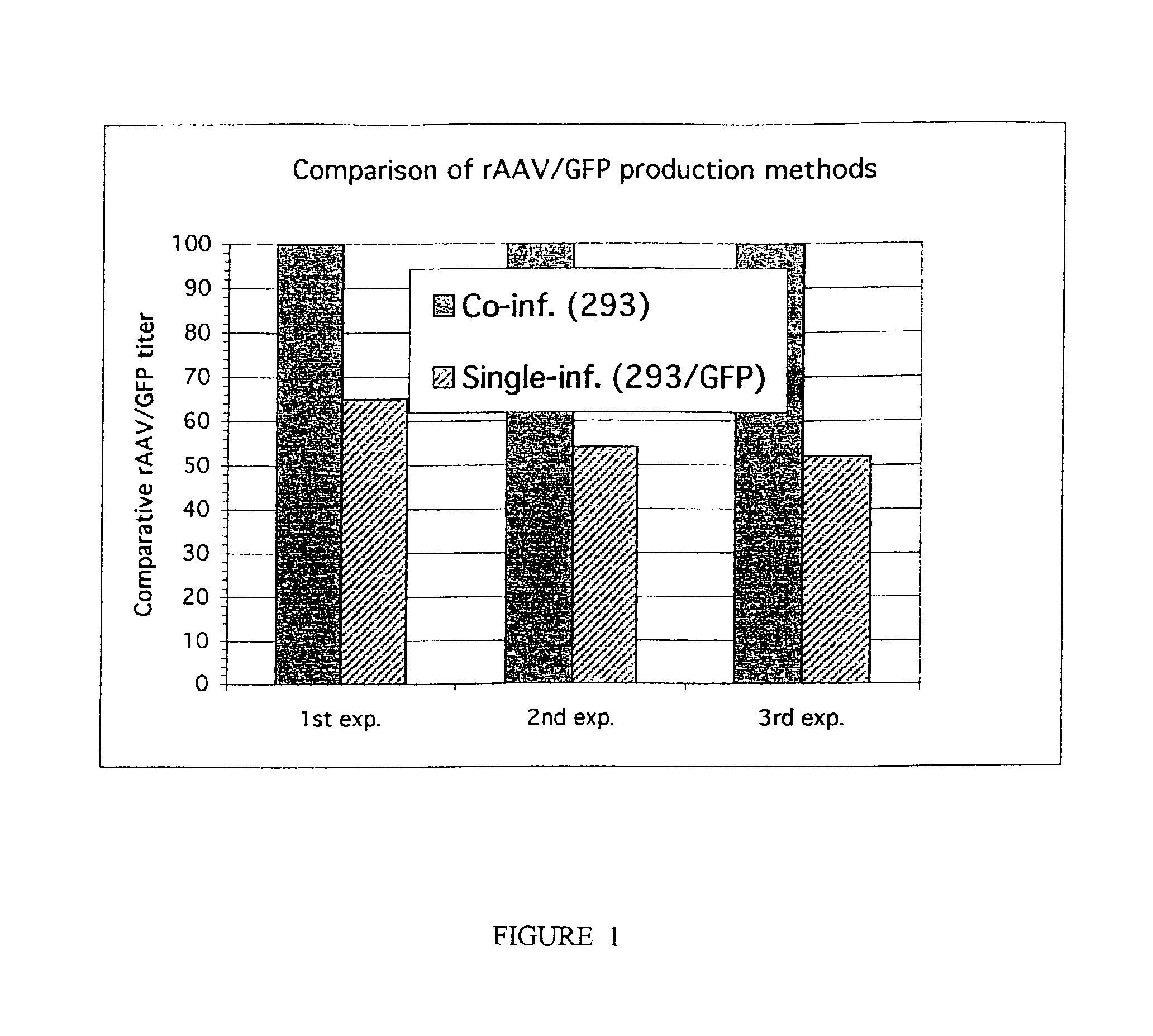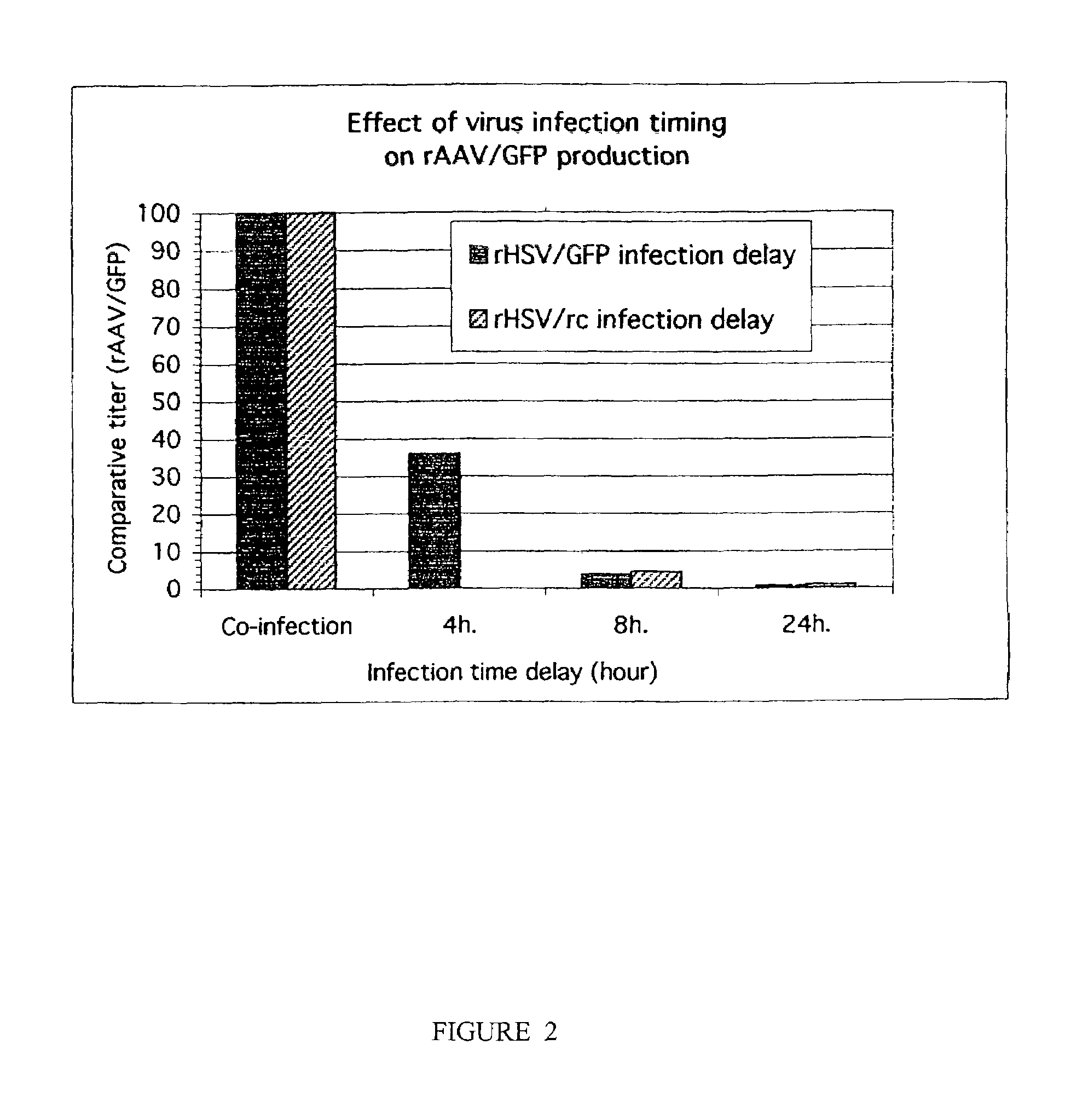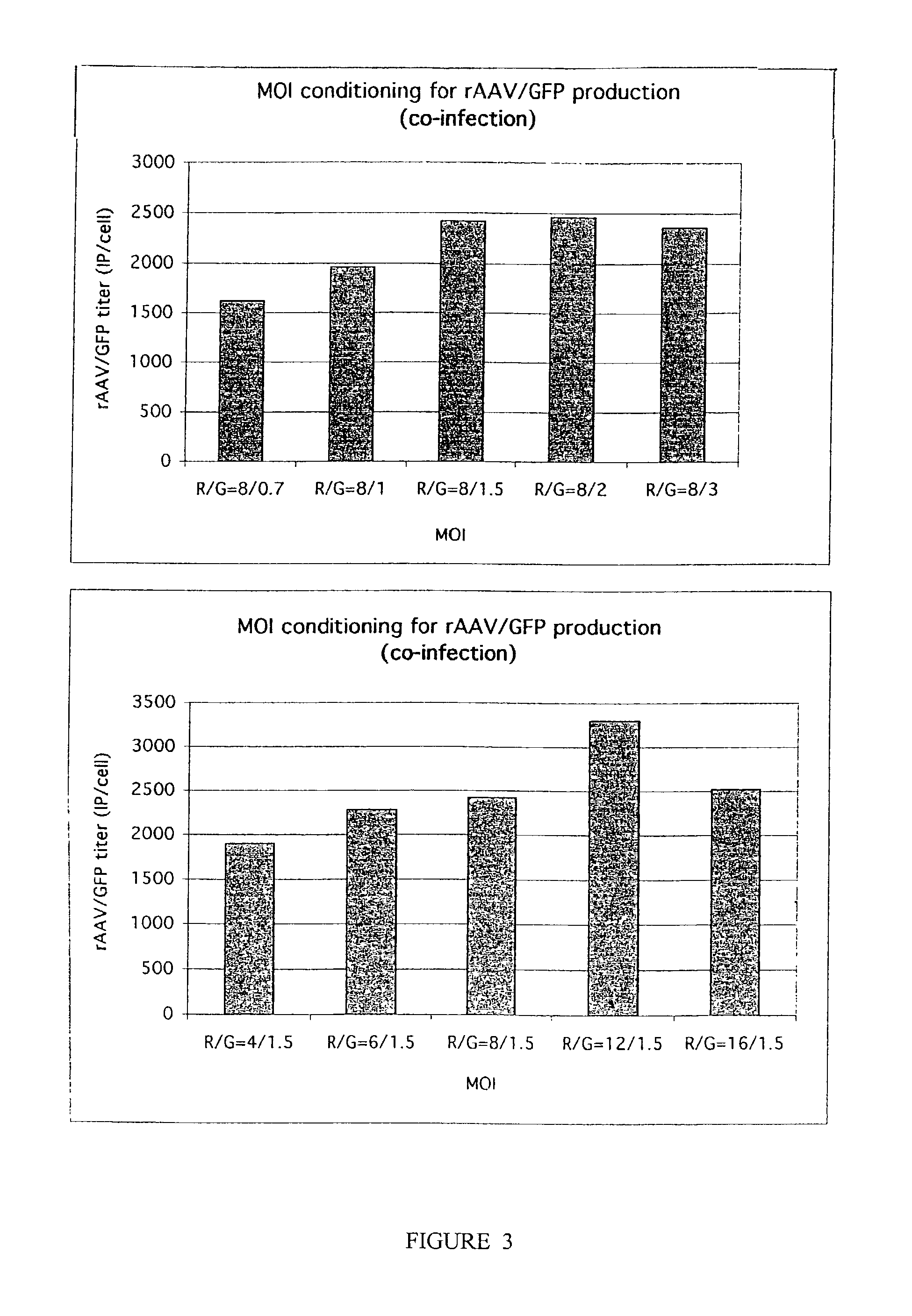High titer recombinant AAV production
a recombinant aav, high-titer technology, applied in the field of molecular biology, can solve the problems of serious practical limitation preventing the widespread use of raav in the clinic, the level of cell culture poses a serious practical barrier to the large-scale production of raav in the “cell factory”, and the plasmid transfection is an inherently inefficient process requiring high genome copies and therefore large amounts of dna. achieve th
- Summary
- Abstract
- Description
- Claims
- Application Information
AI Technical Summary
Benefits of technology
Problems solved by technology
Method used
Image
Examples
example 1
5.1 Example 1
Materials and Methods
[0065]Recombinant HSV viruses. A recombinant HSV-1 helper virus, designated rHSV / rc, containing AAV-2 rep and cap genes, was constructed by homologous recombination techniques as previously described for a rHSV-1 vector designated d27.1-rc, (Conway et al., 1999). A second rHSV-1, a rHSV expression virus designated rHSV / GFP, containing the AAV-2 ITRs flanking GFP, was constructed as follows.
[0066]Cell Lines For rAAV Production And Titering. Vero, 293 and C12 cell lines were obtained from American Type Culture Collection (Rockville, Md.) Cell lines used for production of rAAV by infection with rHSV, defined herein as “producer cells,” included 293, 293-GFP and in some cases Vero. The 293-GFP cell line is a 293-derived cell line, produced from plasmid pTR-UF5, in which the AAV-2 ITRs and GFP, driven by a CMV promotor, have been integrated into the genome of the cells (Conway et al., 1997).
[0067]Choice Of Producer Cells For rHSV Single And Co-infection ...
example 2
5.2 Example 2
Comparison of rAAV Production Levels Using Simultaneous Co-infection and Single Infection.
[0071]This example describes a novel adenovirus-free, transfection-free method of producing infectious rAAV particles using simultaneous co-infection of 293 cells with two recombinant HSV- 1 viruses, rHSV / rc and rHSV / GFP, and demonstrates the superiority of the new method over a single infection protocol using rHSV / rc alone in producer cells having an integrated AAV-GFP expression cassette inserted in the genome.
[0072]Assays were performed in which production of rAAV was compared using the single infection and co-infection protocols described in Example 1 above. FIG. 1 shows results from three separate experiments in which 293 or 293-GFP cells were plated concurrently at the same seeding density, and either singly infected with rHSV / rc (293-GFP cells) or co-infected with rHSV / rc and rHSV / GFP (293 cells). Following harvest and preparation of cell lysates containing rAAV-GFP produced...
example 3
5.3 Example 3
Simultaneous Co-infection: Effect of Timing of Virus Infection
[0073]The above example demonstrates the superiority of a simultaneous co-infection protocol using two recombinant rHSV (rHSV / rc and rHSV / GFP) over single infection using only rHSV to deliver the rep and cap genes to the producer cells. This example, involving a co-infection protocol using rHSV / rc and rHSV / GFP, shows the effect of varying the time of infection with each of the recombinant viruses.
[0074]The experiments were carried out by either co-infection of replicate cultures of 293 cells with rHSV / rc and rHSV / GFP, or by double infection of the cells with one of the two viruses (at time 0) and addition of the other after an interval of 4, 8 or 24 hours. FIG. 2 shows results demonstrating that co-infection was markedly superior to multiple infection at each of the times indicated. With addition of rHSV / rc first, followed by rHSV / GFP after a delay of 4 hours, yield of rAAV dropped to about 30% of the value o...
PUM
| Property | Measurement | Unit |
|---|---|---|
| time | aaaaa | aaaaa |
| fluorescent | aaaaa | aaaaa |
| seeding density | aaaaa | aaaaa |
Abstract
Description
Claims
Application Information
 Login to View More
Login to View More - R&D
- Intellectual Property
- Life Sciences
- Materials
- Tech Scout
- Unparalleled Data Quality
- Higher Quality Content
- 60% Fewer Hallucinations
Browse by: Latest US Patents, China's latest patents, Technical Efficacy Thesaurus, Application Domain, Technology Topic, Popular Technical Reports.
© 2025 PatSnap. All rights reserved.Legal|Privacy policy|Modern Slavery Act Transparency Statement|Sitemap|About US| Contact US: help@patsnap.com



